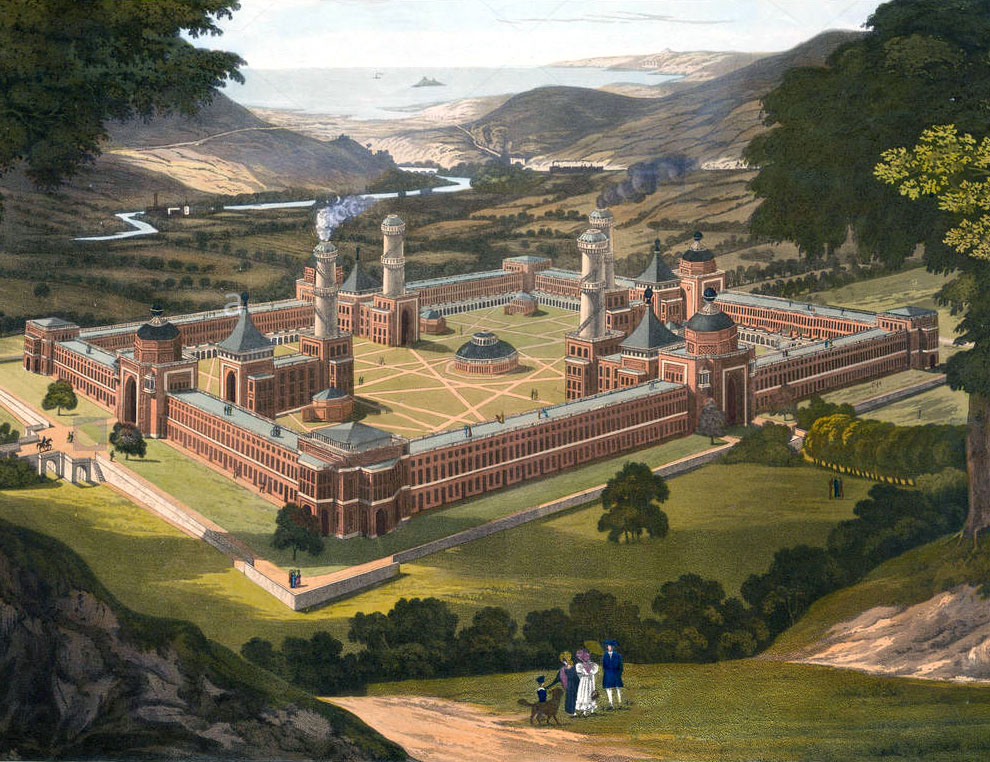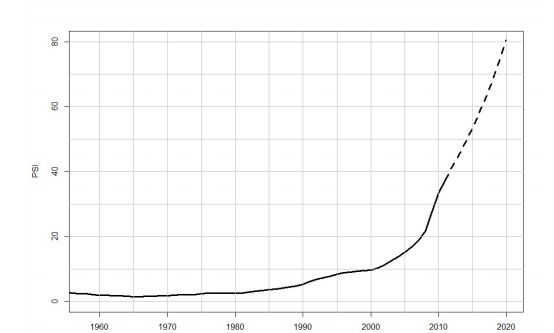Date: March 5, 2017
Author: Paul Cockshott
The term law of value has exoteric and esoteric meanings. The exoteric or superficial meaning is that in capitalist type economy, relative labour values will act as an attractor for relative prices. The more esoteric meaning is that the distribution relations in all societies are constrained by the distribution of labour. In a capitalist economy the great branches of production subsist by trade and their respective revenues have at least to be roughly proportional to the populations that they support.

Although in a socialist economy the great bulk of the economy is publicly run, the distribution of the population accross sectors of the economy continues to exert an influence as does the fact that the population still live in households. This may seem an unexceptional observation, but communist organisations that grew up within previous class societies dispensed with the household as an institution. Think of a monastic community or Owen’s New Harmony. In such householdless communities there would be no personal property as opposed to community property. Food preparation, was communal, and childcare was either abolished as in monastic orders, or carried out communally. But if you have households then private property of the household is distinct from community property. Since the composition and consumption needs of households differ, it is impractical to give all households a uniform ration of goods. An old couple would have little need for children’s shoes or toys, for example. So a socialist economy with households has to allow some flexibilty in consumption, which they have achieved by distributing a portion of people’s income in money. In principle they could have used something other than coins and notes. They could have kept social credit accounts or labour accounts for people, but in all cases, many goods for household consumption would have something very like a price.
In a socialist society then, with households, how does the esoteric aspect of the law of value, the underlying constraint posed by the social division of labour, express itself?
1.1 Intersectoral relations
I shall divide the socialist economy into three sectors
- The production of means of production.
- The production of articles of personal consumption that are distributed for sale or charge to individual workers’ families. At this point it makes no difference whether the articles are sold for actual money, or against the debit of a labour account.
- The provision of uncharged services such as education, healthcare, defence, and public infrasctucture. This is not to say that being conscripted into the army is not a charge on the conscript, but that they do not individually have to pay in cash or labour credits for their military service. Similarly education costs adult society time and resources, and costs the pupils their play time, but it is assumed that there are no school fees.
I will use the subscripts 1,2,3 to denote these sectors. Sectors 1 and 2 produce physical outputs, that is to say they are materially productive in the sense of Adam Smith’s use of the term productive. I will call the output of sector 1 machines, though it also includes all other means of production, and will use the symbol m, in lowercase to indicate a flow, for the gross output of machines and the stock of machinery and equipment used in the sectors as M1,M2,M3.
Machines wear out. I assume that a fraction δ of them wear out each year. So for the sectors the flow of new machines needed to simply stand still is given as δM1,δM2,δM3. If the economy is growing there will be some surplus flow of machinery over wear and tear, set asside for growth, which I will call mg.
| mg = m −( δM1+δM2+δM3) | (1) |
I will assume that the working population is P divided into P1,P2,P3 working in the three sectors, and that for each year of work the government credits a person with a wage of w either by paying them cash or by recording some units into their personal consumption account in a database. The state also, for budgetary purposes has to account for the usage of machinery and equipment in different sectors right down to the individual factories, hospitals etc. The accounting unit for such charging is assumed to be the same, either money, labour hours, concievably energy, as is used for personal consumption accounts. I will use c for the charging rate for a machine. This then gives the current accounting costs Ci of each sector, assuming that the government does not charge itself interest, of
| C1=cδM1+wP1 | (2) |
| C2=cδM2+wP2 | (3) |
| C3=cδM3+wP3 | (4) |
The accounting costs of each sector are made up of the charge for the use of publicly owned machinery , and the payments to the people working there. The first is a charge internal to the public sector but the government has to carry out such sectoral charging if it is to make overall budgetary decisions about the scale of the sectors. The only point at which an actual sale, with change of ownership, happens is when the output of the consumer goods industry is sold to the working population. I will call this the bread or baking industry and label the total output of the industry b and the price of bread p. If we assume for the moment that there is no mechanism by which the working population can save, then we have
| pb=w(P1+P2+P3)(1−t) | (5) |
where t is the income tax rate. That is to say, the price of bread times the bread output equals the after tax income that the working population gets. This is their money wage but in addition they consume a social wage of education, healthcare etc provided by public sector 3. Equation 5 gives the price of bread as a function of the money wage.
It is not so obvious how the government should set the charge for machinery used by the public sector but one obvious way is to set the charge for machines at their imputed cost of production
| c=C1/m | (6) |
The tax revenue plus any profit on sales of consumer goods is then used to cover the cost of the free public services and the net accumulation of new machinery
| cmg+C3=tw(P1+P2+P3)+pb−C2 | (7) |
We have 7 equations 1 to 7 with 8 unbound variables mg,c,w,t,p ,C1,C2,C3. I assume that m, b, M1,M2,M3, P1,P2,P3, δ are fixed by the actual structure of activity so in principle the government could fix either the tax rate or the wage rate, but having done that, all the other variables are constrained. Let us look at options.
I will present a simple example and compare the effect of different wage and tax policies.
| Sector | P | M | output |
| 1 | 4000000 | 250000 | 100000 |
| 2 | 6000000 | 250000 | 1000000000 |
| 3 | 5000000 | 250000 | no physical output |
- The wage is fixed at 1, this ends up equivalent to valuing things at labour values, no profit is made on the sale of consumer goods and income taxes are adjusted to meet the cost of the public services and accumulation. We end up with p c t income tax rev turnover tax rev 0.0073 53.3 51% 7666570 0
- In this scenario income tax is held low at 10% and the price of the consumer goods have to rise to cover the shortfall in government revenue. Given that the physical output of consumer goods stays the same, the only effect of reducing income tax is to increase prices. The net effect is that the goverment raises most of its income from what can either be viewed as a tax on consumer goods, or on the profits of nationalised industry. Wages turn out to be the same, as does the charge for means of production, but consumer goods cost almost twice as much. p c t income tax rev turnover tax rev 0.0135 53.3 10% 1500000 6166666 The relative prices of machinery and bread now diverge significantly from labour values, with bread being sold at a premium due to the tax being levied on it.
The conclusion is that the extent to which a socialist government can disregard labour values is constrained by the level of income tax that they levy. If they rely on income tax for public revenue, then sectoral prices will be proportional to labour values. If they attempt to curtail income tax to a level too low to support public services, then the price of consumer goods has to be raised in what amounts to a sales tax to prevent the accumulation of purchasing power in the hands of the public, and thus suppressed inflation.
1.2 Intra sectional constraints
Even if you assume that the number of people allocated to make consumption goods does not change, that still leaves considerable flexibility in what consumer goods are made. Asume the intention is to adjust output to consumer wants as expressed by the goods they chose to spend their social credits on. What does this imply for the relative prices of goods?
Should these relative prices correspond to relative labour values?
Yes they must, for it is only under this condition that the attempted adjustments people make in their consumption will be compatible with the pre-determined number of people working making consumer goods. Suppose that one group of goods – say furniture is systematically undervalued compared to another group of goods, let us say clothes. Suppose clothes are priced at par for labour values and furniture is sold at a 50% discount with respect to its labour value. Note that it does not matter if the social credits are measured in hours or in some arbitrary currency units, there will always be some quantity of the currency that, averaged accross all prices, represents an hour of embodied labour. Consumers then attempt to shift part of their clothes consumption to furniture. Suppose they cut clothes consumption by the equivalent of 100 million hours of credits, and switch these credits to furniture. Since the furniture is being marked at a 50% discount, these 100 million hours of credits switched from clothing appear to be enough to buy furniture that took 200 million hours to make. Even if the workers who in the past worked the 100 million hours in the clothing industry were shifted to make furniture, that would not provide enough additional labour to make 200 million hour’s worth of chairs, tables etc.
More generally, if prices are not proportional to labour values, then shifts in purchases from one good to another will lead either to patterns of demand that to big to be met with the existing workforce, or if the demand shift goes from undervalued to overvalued goods, to unemployment and short time working in the consumer goods industry.


